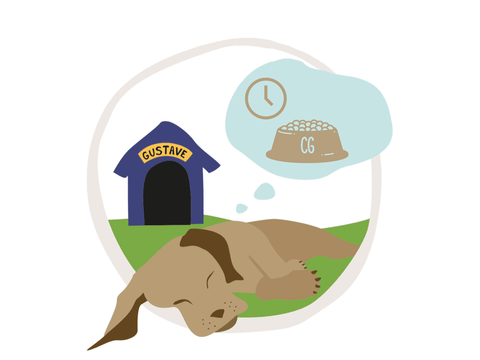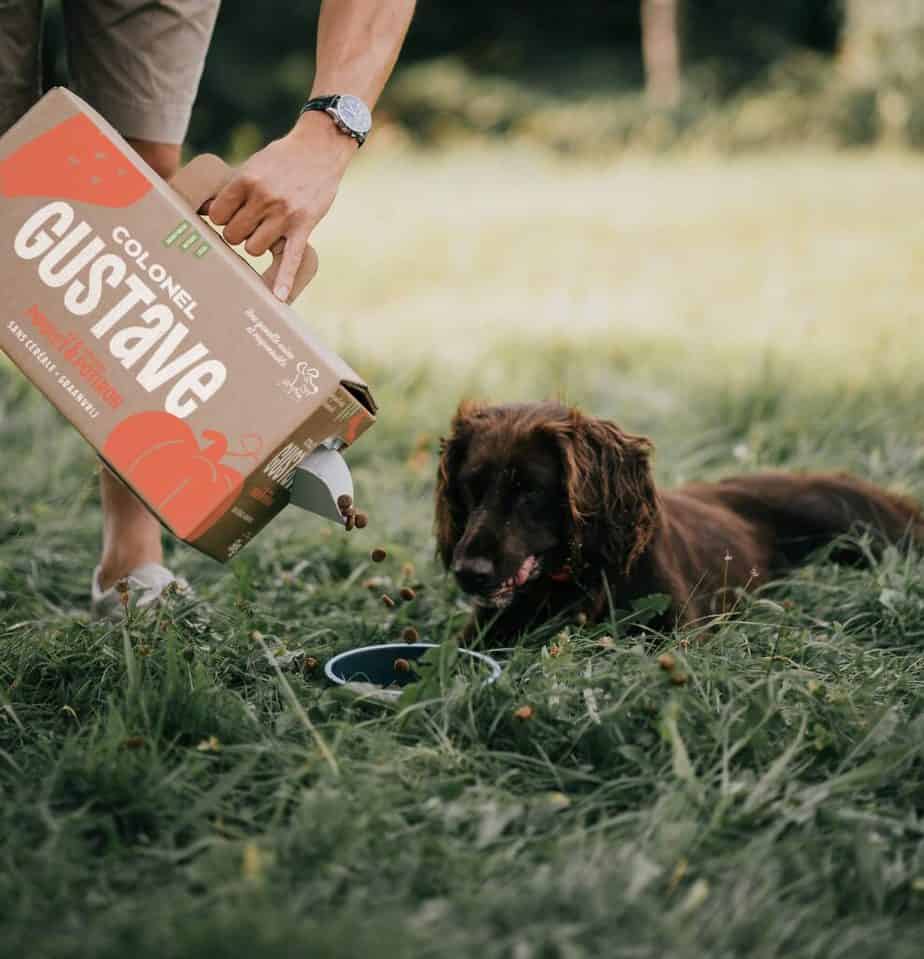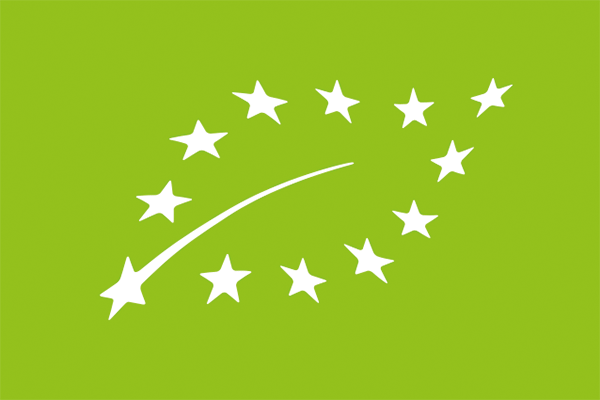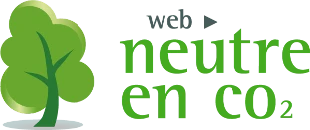Every owner will ask for it at some point. What should I feed my dog? How should I feed my dog? This article tells you more about feeding our protégés.
The dog, a cousin of the wolf, is an animal that needs a specific type of food.based on a meat diet. It is crucial not to give your four-legged friend everything to eat! So we met with our regular vet,
Dr Vienne from clinique vétérinaire d’Erpent.

In this article we review the do's and don'ts when filling Nestor's bowl : the ingredients, the recommended amounts, as well as when in a dog's life it is advisable to change the way he is fed.
What to feed your dog?
The dog, like the wolf, needs a large amount of meat, but not only that. He needs to eat a balanced diet : a mixture of protein, fat, fibre, minerals and vitamins.
It is important to give quality food. This is why it is interesting to go a little further in the study of the foodstuffs used but also their origin. Whether for animal proteins or other ingredients, some manufacturers only take poor quality leftovers and add a lot of sugars and bad fats, dogs will find the food palatable but health concerns will begin. Favour brands like Colonel Gustave that source their ingredients themselves. They will be able to tell you more about the quality used. At Colonel Gustave, for example, the food used is fit for human consumption :-)
An informed choice therefore requires an understanding of the different sources of nutrients in a dog's diet. Here is a short summary:
Proteins Proteins maintain and enable the development of muscles. Necessary for all dogs, they are even more important for growing puppies and sporting dogs. Proteins are found in the meat or fish contained in the croquettes.Fat
True story, fats are also essential, providing an indispensable source of energy. However, be careful not to overdo it and exceed the recommended threshold. They are in a way the fuel of a dog's body, but the uneaten surplus is stored and the dog will become bigger until obese. In addition, among the fats we find fatty acids such as Omega 3 and 6 (excellent for the heart and brain). Once again, attention must be paid to the origin and therefore the quality of this fat. Thus, the figure alone does not count and it is important to look further.
Minerals
Phosphorus and Calcium are two minerals found in dog food that are necessary for the proper functioning of the body. Phosphorus is good for the brain (development and maintenance) and is used to capture calcium, which is useful for the proper development of our dogs' teeth and bones.
Fibers
Fibre is very good (in the right quantity) for good digestion. In addition to being a source of energy, they facilitate digestion by improving intestinal transit. Fibres are not stored. The more of it in the food, the faster your dog will go to the toilet. A dog should poop between 1 and 3 times a day maximum.
Vitamins
A dog's body (like a man's) does not produce vitamins naturally. It is therefore essential to look for them in their diet. Vitamins C and B help the proper development of bones and teeth, among other things. These two vitamins are said to be water-soluble (they dissolve in water) and are therefore permanently removed from the body. It is therefore necessary to have a constant, but not too large, input. Other so-called fat-soluble vitamins are stored in fat and are good for your eyesight (vitamin A), for blood clotting in case of injury (vitamin K), for the production of red blood cells (vitamin E) and for calcium assimilation (vitamin D).
In addition to the vitamins contained in the kibbles, it is possible to give supplements, but be careful, only after good advice from your vet! It would be bad for the dog to assimilate too much.
A little tip to help you choose the right food for your dog when feeding him kibble is to look at the analytical composition. The first ingredient that must appear is "fresh meat" and not "cereals" or "animal by-products" or "animal meal".. Pay attention also to ingredients that are similar, but separated so that they do not appear first in this list (maize and maize flour, listed in two parts to reduce the rate of each and appear lower in the list).
When to feed my dog: how many meals a day and how often?

Firstly, it is strongly discouraged to allow the dog full access to its food at will and it is therefore recommended that it be given in the form of a meal. Normally, two meals are recommended for dogs with a distended stomach, however there are some exceptions:
Puppies, sporting dogs or pregnant females
They have higher energy requirements and therefore require larger quantities of food - to be split in more than one meal. There are specially designed feeds for pregnant females. It is important to note that they are similar to puppy recipes with higher energy intakes.
Dogs suffering from gastrointestinal disorders
Fractionating the meals of dogs suffering from such disorders will ensure easier digestion.
Especially voracious dogs by nature
Dogs such as Beagles and Labrador Retrievers are by nature more voracious than other breeds and require control over their food. It is not advisable to give only one ration during the day. The dog will swallow 300-400 grams of food in one meal, which will make him thirsty and he will drink his water bowl directly. His stomach will swell due to this excess of food and water which is not good for the dog and will provoke vomiting in case of exercise. It is therefore better to split into several meals. The owner can feed in 3x over the day to give his dog fuel for the whole day and give him the impression that he eats often.
Dogs on a diet
To prevent them from feeling too hungry, spread the daily ration of food over different meals.
How much food should I feed my dog?
The recommended quantities to feed your dog are indicated on the kibble packaging. They obviously depend on the weight of the animal and indicate a minimum and maximum recommended dose. This is, however, given as an indication. It will be essential for the owner to determine the right weight to have a dog in good shape. This depends in particular on the breed, the age of the dog, the appetite, etc...

When to switch to adult dog food?
Although it is possible to feed your puppy with adult dog food, the ration must be adapted to meet the puppy's higher protein and calcium requirements. However, you should not feed your puppy with too large quantities of kibble, otherwise he risks storing fat, so it is advisable to use specially adapted kibble, especially for puppies. These contain higher levels of protein and calcium.
The opposite is true and the adult dog must eat adapted kibbles, as he no longer needs as much protein and calcium.
The transition from puppy kibble to adult kibble is around 6 to 8 months for an average dog and 10 to 12 months for a large dog. A puppy should be put on adult kibble in the last third of its growth. It is also very important to note that a neutered puppy must automatically switch to an adult kibble because his metabolism changes and too much energy intake would cause him problems.
What food should I feed my older (senior) dog?
It is important to mark the transition in the feeding of your teddies as they get older. They will need a lower energy diet than adult dogs. A dachshund does not become a senior at the same time as a Bernese Mountain Dog, it is again a question of size. Smaller dogs have a longer life expectancy and become seniors later than larger dogs. When you start noticing signs such as a dull coat or that your doggie is becoming less active, it's certainly a sign that your dog has become senior. A small breed dog will generally become senior at about 10 years of age. This threshold increases to 9 years for medium dogs, 7 years for large dogs and 5 years for giant dogs.
A suitable diet for a healthy dog!








